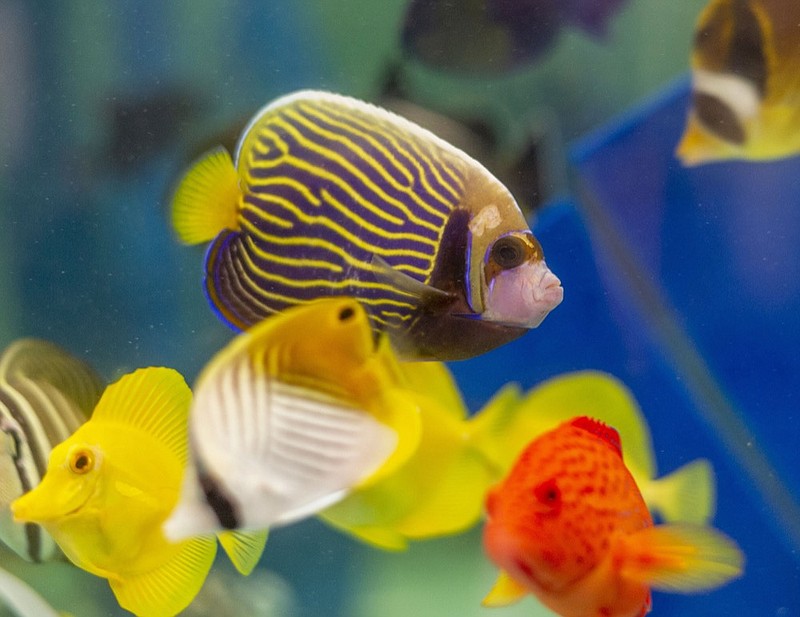A new habitat opening this month at the Tennessee Aquarium will highlight the diversity of life on an island. Just don't confuse it with a certain '60s sitcom.
"People think of 'Gilligan's Island' when they think of an island," says Thom Benson, director of external affairs at the aquarium. "They think of an island in the middle of the ocean, but we have them around here."
Most Chattanoogans are familiar with Maclellan Island, which lies beneath Veterans Bridge, and Williams Island, near Baylor School.
If you go
› What: “Island Life” exhibit› When: Opens March 15› Where: Tennessee Aquarium, 1 Broad St.› Admission: $29.95 adults, $18.95 children 3-12.› Phone: 1-800-262-0695.› Website: www.tnaqua.org.
The aquarium's new "Island Life" gallery will go further afield with six major components that explore Vancouver Island, Madagascar, the Pacific Reef, flashlight fish, tree monitors and clownfish/anemone. It will be located in the space where the temporary jellyfish exhibit was.
To help with the Vancouver Island part of the exhibit, the aquarium hired noted muralist David Rock to paint the background. Rock started his career at the Bronx Zoo in 1983 and has painted at zoos and museums around the world, including in Mexico, Portugal, Kuwait and Canada.
Rock, who lives in Sisters, Oregon, with his zoologist wife, Rose, was in town for about 10 days last month. He arrived with a toolbox full of brushes and paints, a compressor for his spray gun and little idea of what he would paint, though he knew he would be painting the Vancouver Island exhibit background.
He had no plan for how he would paint the roughly 250-square-foot space, but after a brief meeting with aquarium staff around 9 a.m., he had a rough sketch drawn on the wall by 11 and was blocking in the sky above a shadowy blue mountain range with trees and snow by midafternoon the following day.
He uses a variety of methods to apply the flat, exterior house paint to the walls.
"I roll on the base and then use brushes to clean up the edges," Rock explains.
Benson says that Rock's work creates a backdrop that blends into the exhibit that perfectly puts the viewer into the scene. He's traveled and painted enough to have a treasure- trove of images in his head, which he uses for inspiration.
Because of what he does, he is more interested in the backdrop than the focal point in many wilderness photos.
"I used to look at coffee-table books, but there was always some stupid leopard in the way," he says, illustrating the importance of perspective.
Jeff Worley, manager of exhibit services at the aquarium, has several full-color, life-size images of children of varying ages and heights taped to his office wall. He uses differing colored strips of painter's tape on the walls surrounding his desk to represent the heights of everything from viewing platforms to water lines in the exhibits he is working on.
"It lets me see what kids will see," he says.
Worley says the aquarium staff started thinking about what they would put in the exhibit space about five years ago.
"Every department is represented [in the talks], and we plan and brainstorm looking for what will be exciting and different, and then we bring in experts," he says.
The exhibit ticks all of the staff's wish-list boxes with colorful animals, interactive graphics, educational elements and exciting new exhibit methods. Guests will be able to walk under a "candy-cane acrylic window" to look up into the water in the Vancouver Island exhibit, for example.
The large tank represents the rocky shoreline of the Pacific Northwest, and waves will regularly crash along the curved glass walls at about eye level for kids.
The Madagascar exhibit will feature doors at the front instead of the back to allow staff access for feeding, cleaning, maintenance and animal retrieval animals for special programming. That means visitors will be even closer to the animals and the action.
"The flashlight fish will be in a mirrored room similar to what we did with the jellyfish," Worley says.
There will also be added graphics and interactive activities for kids, he says.
Clownfish can sometimes live their entire lives inside the protective cocoon of an anemone. The clownfish/anemone exhibit will have an area populated by kid-size tubes representing the tentacle-like anemone, which sting, and even poison, other fish in the real world.
"These island exhibits offer a lot of variety and opportunity," Benson says.
Contact Barry Courter at bcourter@timesfree.com or 423-757-6354.

